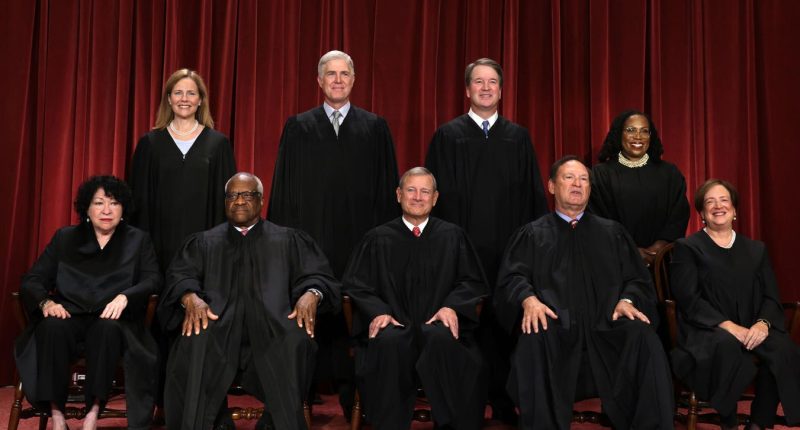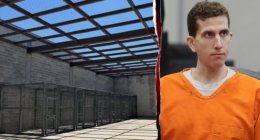Share this @internewscast.com
WASHINGTON, DC – OCTOBER 07: United States Supreme Court (front row L-R) Associate Justice Sonia … More
Getty Images
n a 7-2 decision, the Supreme Court ruled against hospitals in Advocate Christ Medical Center v. Kennedy, addressing how to account for patients in Disproportionate Share Hospitals (DSHs). A DSH serves a high volume of low-income, Medicaid-eligible and uninsured patients, receiving special payments to offset uncompensated care costs.
The case, led by Advocate Christ Medical Center in Oak Lawn, Illinois, and joined by over 200 hospitals, sought to clarify patient eligibility for enhanced DSH payments. Plaintiff hospitals argued they were entitled to additional DSH payments for any patient eligible for Supplemental Security Income (SSI), a federal program supporting low-income disabled, blind, or elderly individuals. However, Medicare, represented as Secretary Robert F. Kennedy Jr, maintained that only patients actively receiving SSI cash payments should count, excluding those merely eligible or enrolled.
This distinction impacts billions in Medicare payments to hospitals serving low-income populations. Associate Justices Ketanji Brown Jackson and Sonia Sotomayor dissented, advocating for broader eligibility. The ruling reinforces stricter criteria for DSH calculations, potentially straining hospital finances, particularly for safety-net systems. As healthcare costs rise, this decision underscores ongoing tensions between federal policy, hospital reimbursement and healthcare’s growing dependency on government reimbursement for fiscal solvency.
What Is A Disproportionate Share Hospital?
Commonly known as safety-net hospitals, physicians at DSHs treat a significant proportion of low-income, Medicaid-eligible, and uninsured patients, often at an academic trauma center. For these patients, alternative care options are frequently unavailable.
Mandated by federal law, Medicaid programs provide DSH payments to qualifying hospitals to ensure financial stability and maintain access to care for vulnerable populations. This was established during the 1985 Consolidated Omnibus Budget Reconciliation Act, the DSH program uses a formula based on the hospital’s DSH patient percentage, which includes Medicare patients receiving Supplemental Security Income and Medicaid-eligible inpatient days.
These facilities incur significant financial losses caring for underserved populations, and DSH payments supplement reimbursements to support their operation.
It’s not a trivial program. In 2021, Medicaid DSH payments totaled $18.9 billion, funded by federal and state contributions
What Is Supplemental Security Income?
Supplemental Security Income (SSI) is a federal program administered by the Social Security Administration that provides monthly financial assistance to individuals with limited income and resources who are disabled, blind, or aged 65 and older. SSI aims to ensure a minimum income for basic needs like food, clothing, and shelter. Eligibility requires meeting income and asset limits, and disability must prevent substantial gainful activity. In 2025, the maximum federal SSI payment is $967 for an individual and $1,450 for a couple.
What’s The Technical Nature Of A DSH?
In essence, the federal government has established a formula to assess the proportion of indigent patients served by a health system. This determines eligibility for DSH payments.
The DSH patient percentage is the sum of two fractions: the Medicaid fraction and the Medicare/SSI fraction. The formula looks at what percentage of the total patients treated are Medicaid eligible and what percentage of Medicare patients treated received SSI payments. These are indicators for low-income patients.
Generally, a hospital qualifies for DSH payments if the DSH patient percentage exceeds 15% or meets state-specific threshold. There some nuances, but that’s the broad policy strokes.
What Does This Lawsuit Mean For DSHs?
Hospitals reported losses exceeding $1.5 billion annually in DSH payments from 2006 to 2009 due to restrictive patient accounting methods. This interpretation creates an estimated 15% payment shortfall based on eligibility criteria. The Supreme Court’s ruling in Advocate Christ Medical Center v. Kennedy upheld two lower court decisions, reinforcing that DSH calculations should include only patients actively receiving SSI cash payments. In 2022, the U.S. District Court for the District of Columbia ruled in favor of the government, a decision affirmed by the U.S. Court of Appeals for the District of Columbia.
The legal consensus centers on the variability of SSI eligibility, which depends on monthly income and assets. Justice Amy Coney Barrett, writing for the majority, explained, “Recipients must apply and be deemed eligible for benefits, and eligibility can fluctuate monthly based on income and resources.”
This dynamic underscores why only active SSI recipients are counted, aligning with federal policy to ensure precise DSH funding allocation. The ruling, while clarifying eligibility, may exacerbate financial challenges for safety-net hospitals serving low-income populations.
What’s Next For DSHs?
Hospitals are increasingly reliant on government funding for fiscal solvency, a trend perhaps warned by Frederick Hayek et al. Safety-net facilities face significant financial strain, prompting strategic responses. Immediate tactics will include lobbying Congress to delay DSH cuts, adopting value-based care models and perhaps enhancing operational efficiencies through digital tools and artificial intelligence. Leveraging the 340B Drug Pricing Program offers another avenue to offset losses. Rising labor costs further complicate finances, hospitals were certainly look to curb that growth. It’s importance to recognize that a large majority of physicians are now employees of DSHs, not independent providers. Will they be caught up in the downward pressure on hospital labor costs?
At it’s core, stakeholders must closely monitor the sector for ripple effects, such as reduced services or closures, which could disproportionately impact low-income communities.









